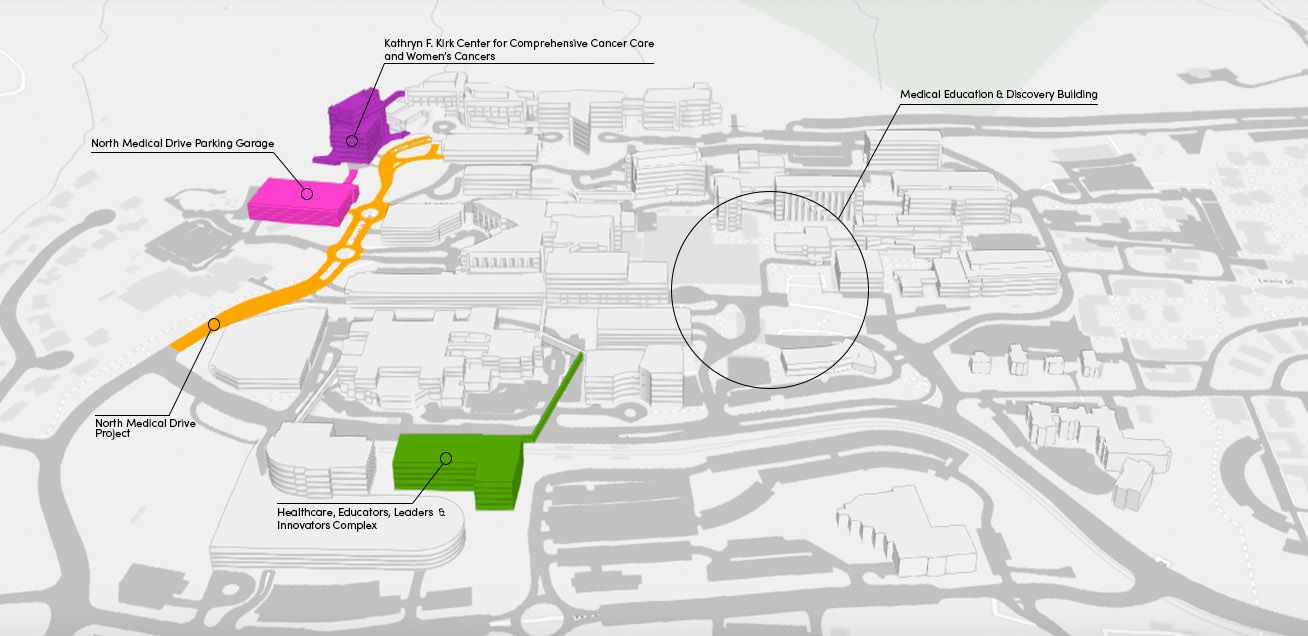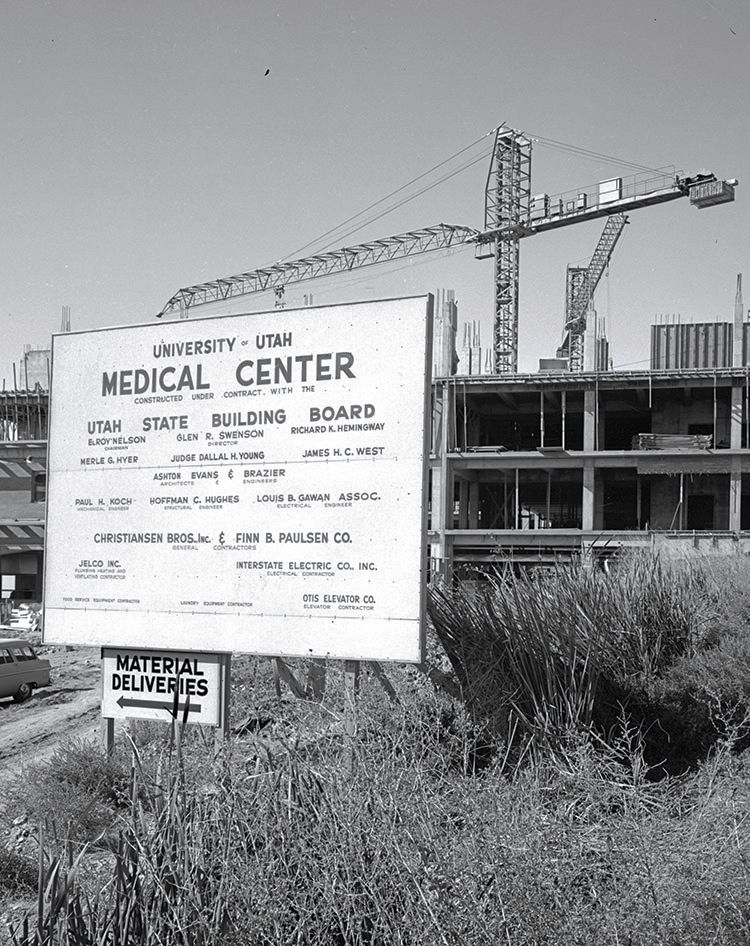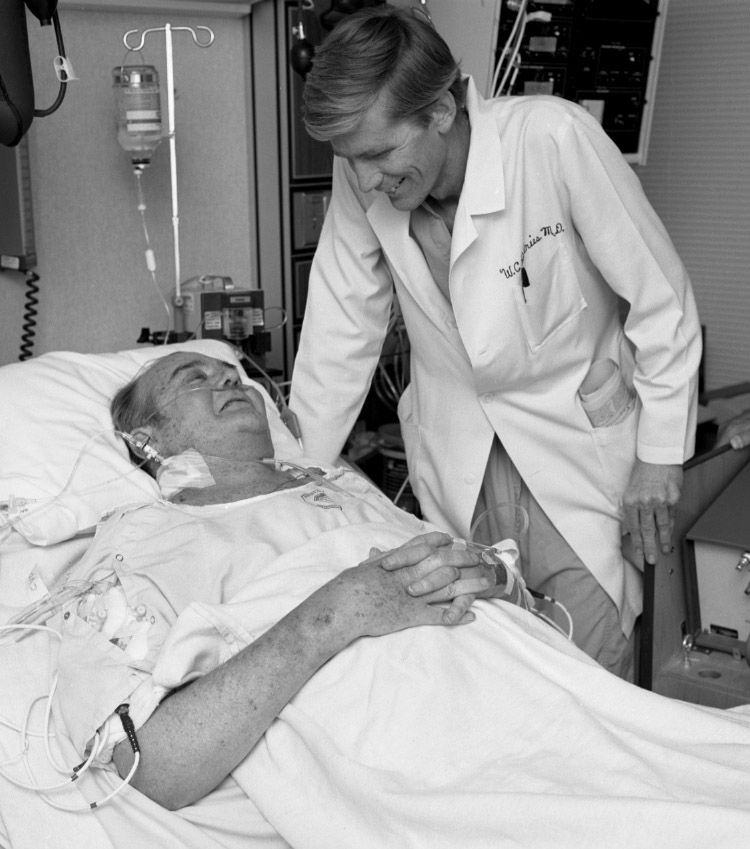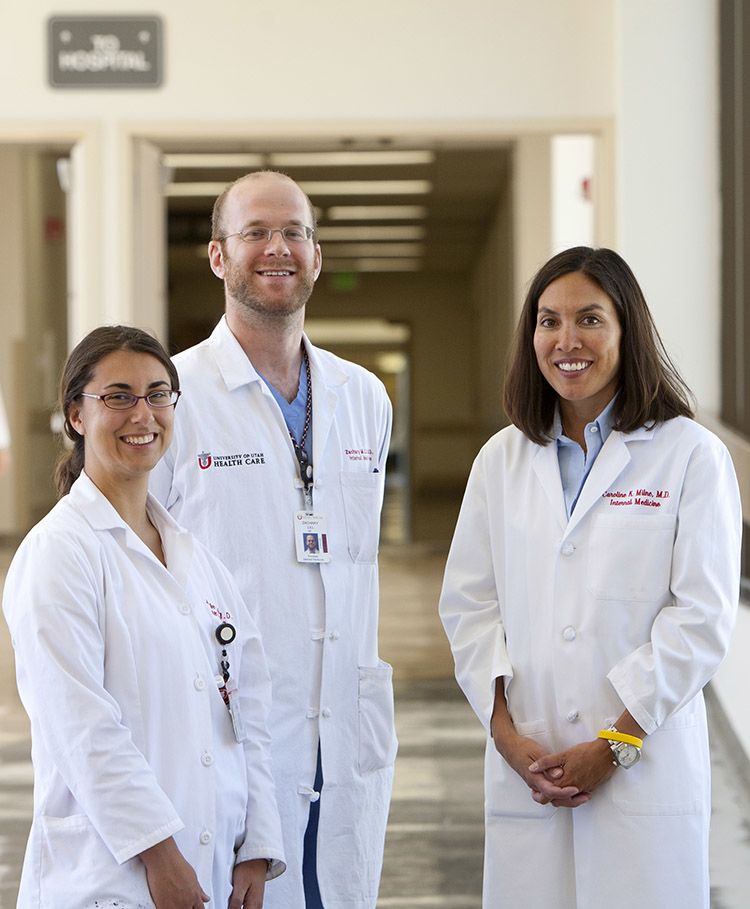The Future of Campus Transformation
A look at the next chapter of University of Utah Health's Campus Transformation

When construction was completed in 1965 on the new University Medical Center, Phillip Price, M.D., dean of the U of U School of Medicine, said that the facility "would not be palatial or fancy, but which would facilitate carrying on the highest grade of scientific work, which by the quality and reputation of its clinical work would attract patients from the whole mountain region irrespective of their economic status, and which would have such a standing in the community that the best physicians and surgeons of the city would aspire to its visiting staff."
True to Price’s words, the University Medical Center, today known as Building 521, offered a destination for those seeking the best care, as well as a training ground for generations of healthcare workers, and a launching pad for discoveries, innovations, and breakthroughs that would change the state, the country, and the world.



Building 521 served the patients, faculty, staff, and students of University of Utah Health well, but after more than five decades the time has come to replace the aging building. Replacing the building, coupled with the extraordinary growth that U of U Health is experiencing, calls for big ideas and a lot of work. It calls for a transformation.
The original plan to replace Building 521 was to demolish the existing structure and build a new school of medicine building on the same site. However, the task of relocating 650,000 square feet of active clinical, research, and education space while constructing a new building proved unrealistic.
As a result, with the input of many key stakeholders, a new plan was developed based on a more traditional approach of “build first, demolish second.” Branded the Medical Education & Discovery building, a new facility is planned near where Building 521 stands today.
“Despite all of the challenges of 2020, when I look forward, I’m pretty excited.”
- Michael L. Good
CEO, University of Utah Health
The building will be a cutting-edge academic hub, complete with spaces devoted to global health initiatives, simulation, and discovery. At its heart is teaching with the majority of its space dedicated to core medical education. The Medical Education & Discovery building will serve to prepare the next generation of healthcare workers through core med classrooms designed for active learning, the state-of-the-art Dumke Center for Advanced Medical Simulation, and the James Levoy Sorenson Innovation and Discovery Center.
Though, as Michael L. Good, MD, CEO of University of Utah Health, reminds us “it’s not the buildings, it’s the people in them.” Most importantly, the building will offer facilities to match the excellence and drive of University of Utah Health faculty, staff, and students.

There are major pieces of the puzzle that need to fall into place to make the next chapter of our Campus Transformation happen. Continued development on the Medical Education & Discovery building is key, however, removing Building 521 is a heroic feat intertwined with a number of other projects.
While not directly related to the projects around Building 521, work on the North Medical Drive project and the Kathryn F. Kirk Center for Comprehensive Cancer Care and Women’s Cancers continues.
In order for Building 521’s demolition to proceed as planned, its current residents need new homes. The primary location for department offices is Healthcare, Educators, Leaders & Innovators Complex (HELIX). Currently under construction, the building is expected to be ready for occupants in early 2023 making way for the start of demolition activities in Building 521.
Work related to the demolition of the Medical Research & Education Building (MREB) will begin with hazardous material removal in late 2021. Those currently located within MREB will relocate throughout 2021. The Wintrobe Research Building will remain with some additions to the south exterior face after MREB is demolished.
Finally, once Building 521 is completely demolished, we’ll need to make the best use of the space at the center of campus. Instead of putting up another building, we’ll construct a plaza, giving patients, employees, and students a green space to take a breath and relax. The open space will also reveal the beautiful views of the valley for those in the Nielsen Rehabilitation Hospital.
Stay tuned to ct.utah.edu and the Campus Transformation Pulse page for updates.
